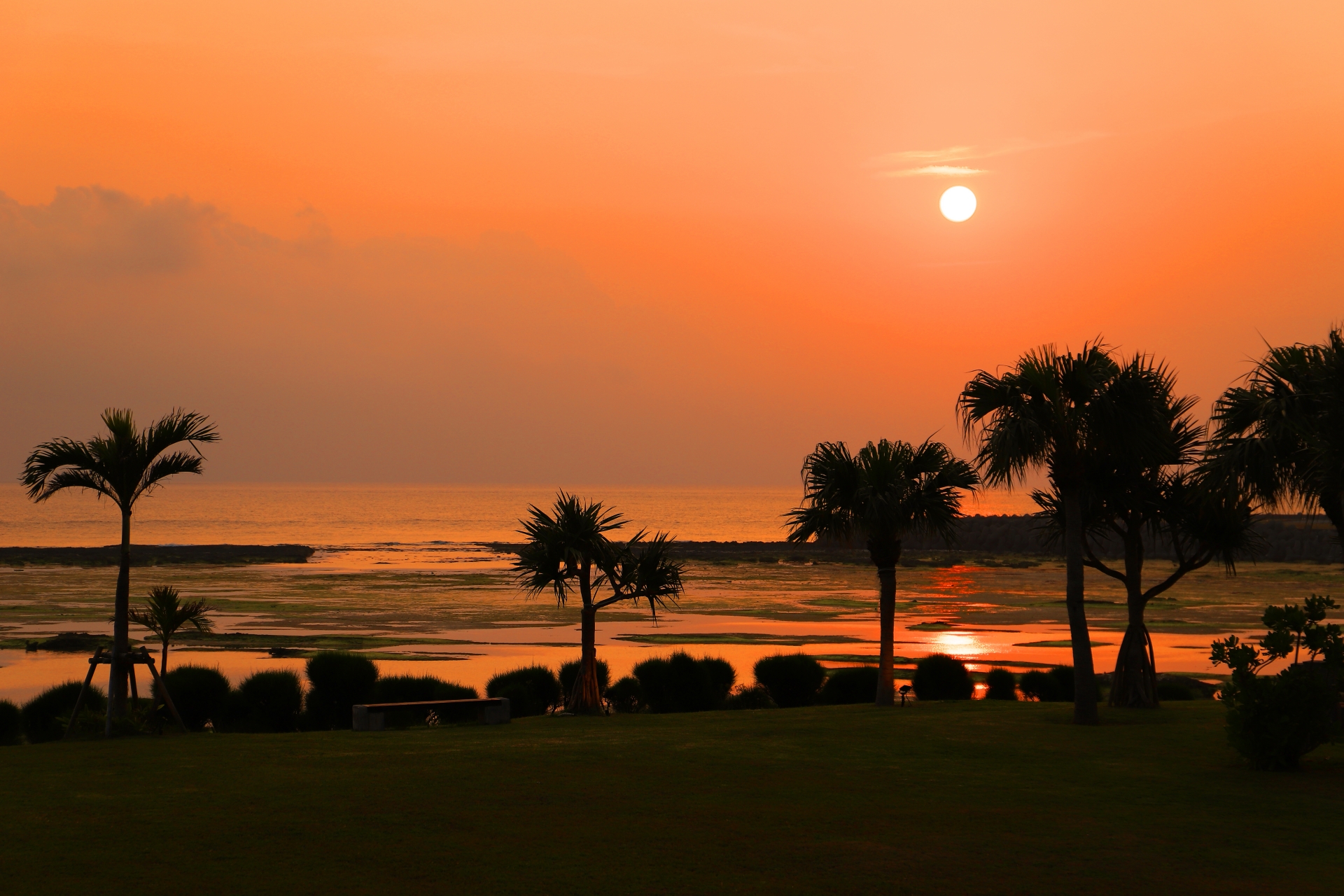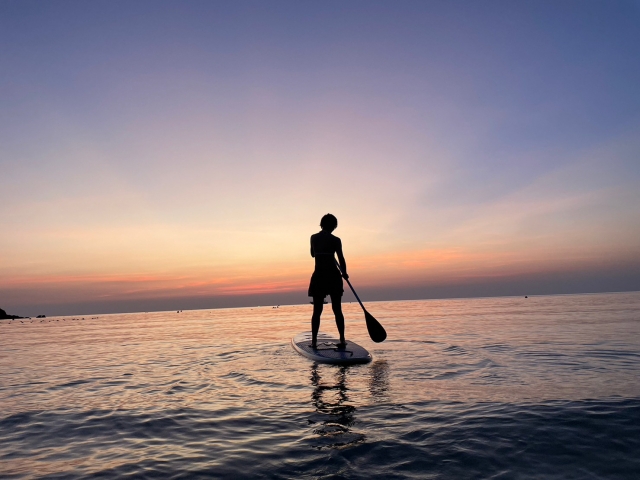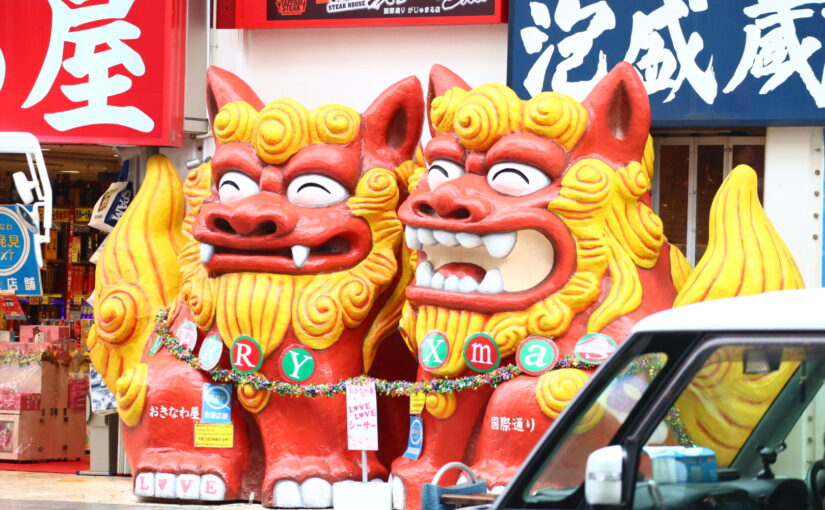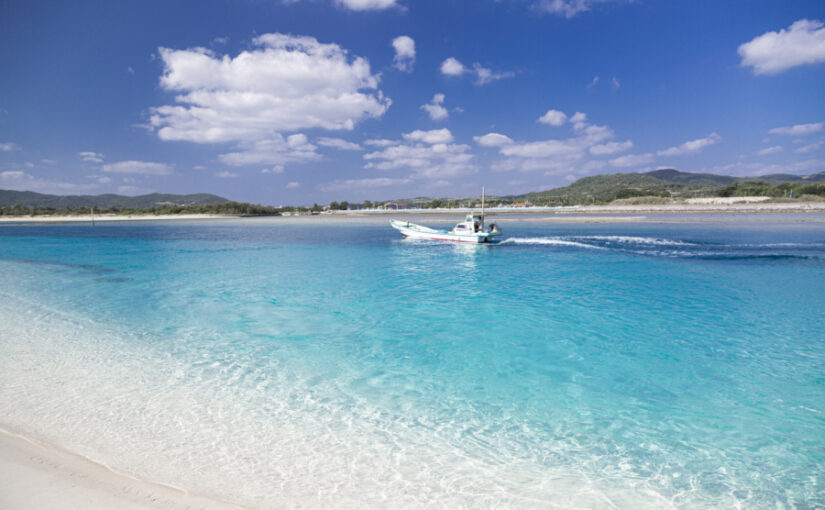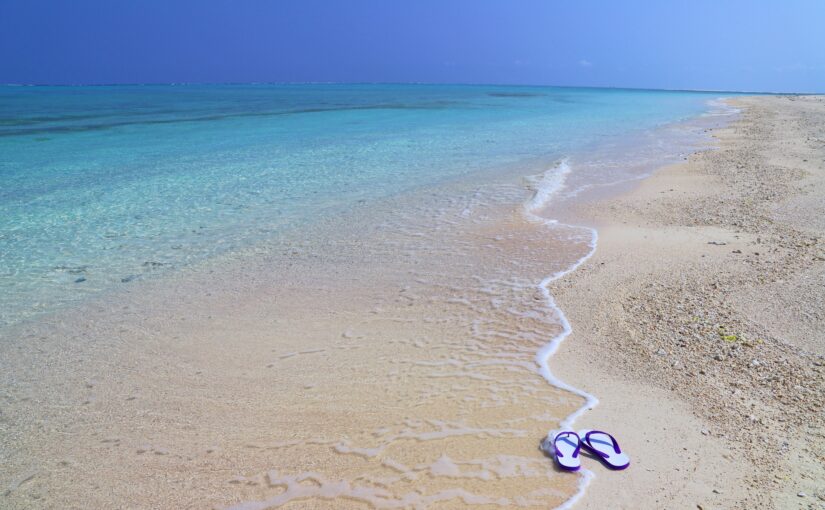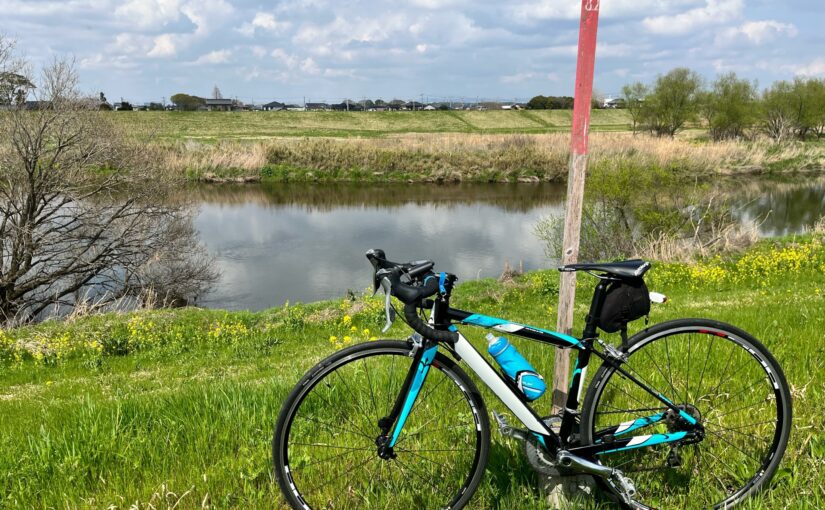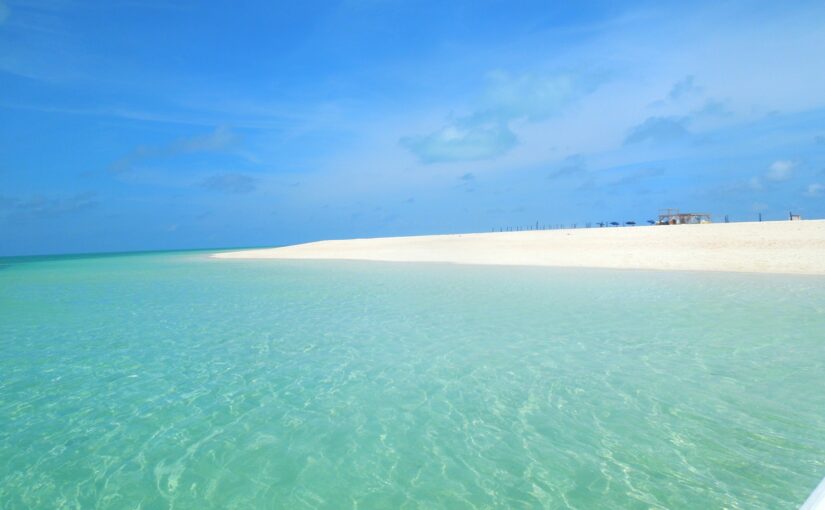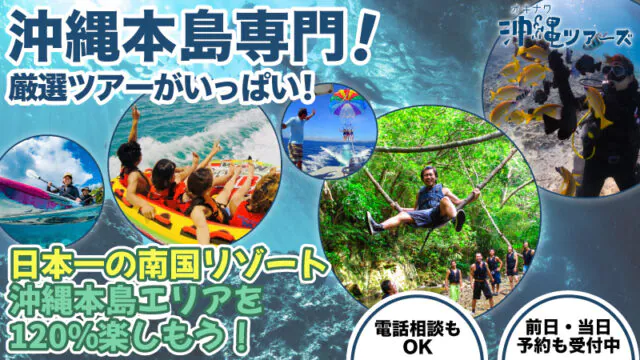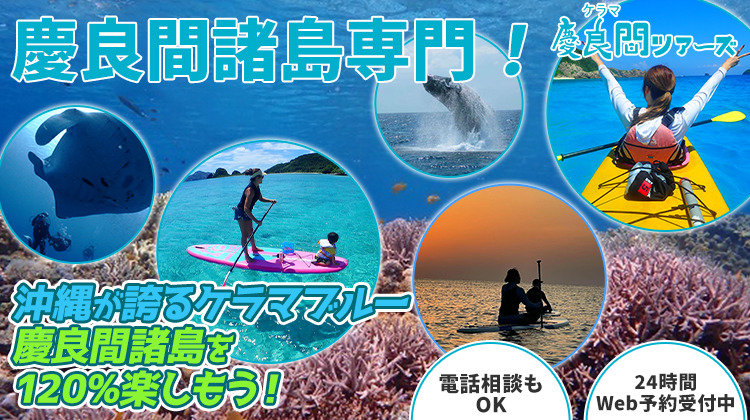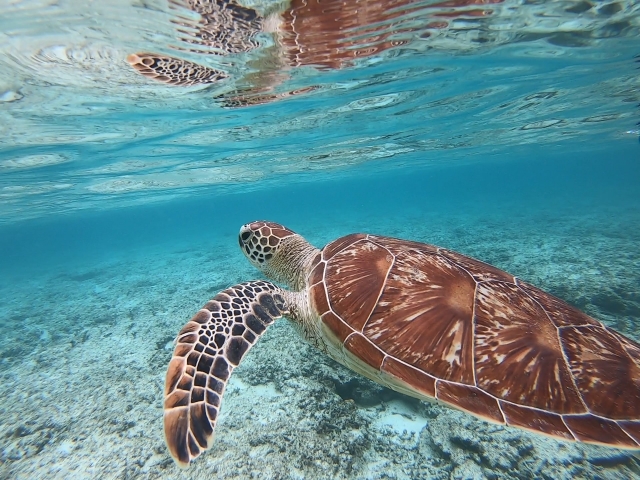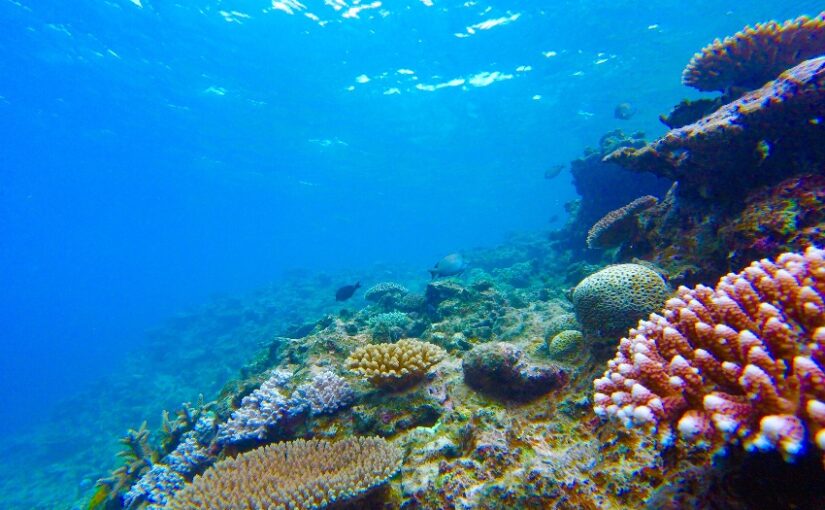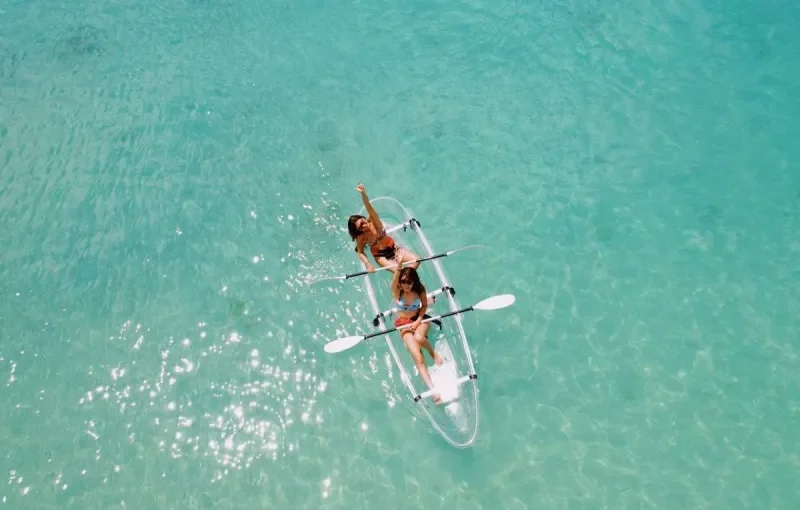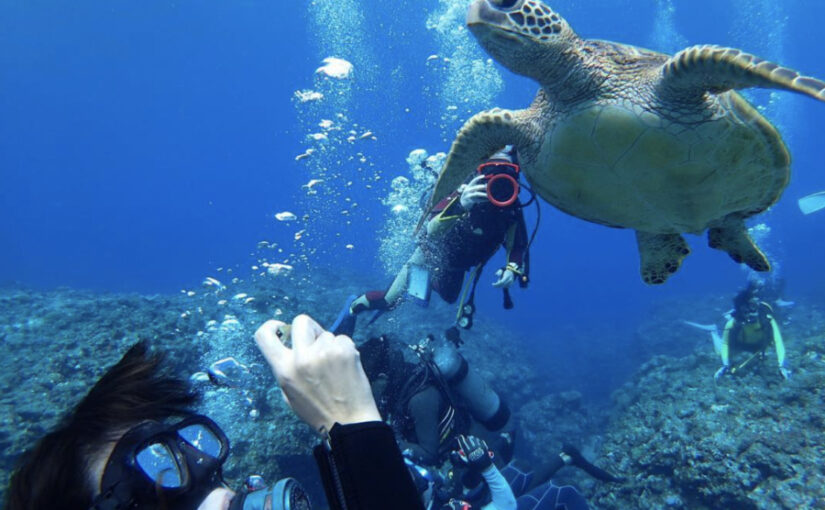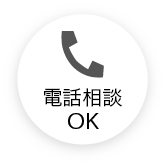Let's see fireflies on Kumejima Island! What is the natural monument "Kumejima Firefly"?
Table of Contents
What is Kumejima's firefly "Kumejima Firefly"?

Fireflies, which beautifully color the nighttime landscape with their fantastic light, are creatures that live in places with beautiful water.
Both male and female fireflies glow, but there are differences in how they glow.
Fireflies in Japan are generally characterized by males flying around with a strong glow and females glowing without flying.
Fireflies are a poetic reminder of early summer, but have you ever heard of Kumejima's endemic firefly, the "Kumejima firefly"?
In this issue, we will introduce fireflies and viewing spots on Kume Island.
Firefly viewing is a special experience that can only be had on Kume Island with its beautiful natural surroundings.
If you like creatures in the great outdoors or are considering sightseeing in Kumejima with your children, please take a look at this page.
Characteristics & Ecology
The Kumejima firefly is unique in that it is an endangered aquatic firefly.
You may know that aquatic fireflies are a type of creature that lives in water during its larval stage and cannot live without clean water.
One feature of kumejima fireflies that distinguishes them from other fireflies is that the males fly around with a strong glow and synchronize their glow in groups (simultaneous group flicker), while the females glow at dawn and lay eggs in groups.
Because of these characteristics, Kumejima fireflies are designated as a national natural treasure and cannot be captured or bred unnecessarily.
In addition, there are about 50 species of fireflies in Japan, about half of which live in Okinawa, and the only aquatic firefly of that half is the kumejima firefly.
Its ecology is such that larvae born from eggs live in the water around late May and emerge on land around February to burrow into the soil to form pupae.
After about a month, the adults hatch, and in April or May, they flicker simultaneously in groups to attract females and lay eggs to complete their lives in order to produce offspring.
The beautiful light that shines forth at the moment of death is both ephemeral and a beacon of life.
Season to see

It is said that the season when Kumejima fireflies can be seen glowing beautifully as they lay their eggs is from mid-April to early May, with a particularly large number of them being observed in late April.
The collective flickering of the Kumejima fireflies is a rare experience, as the scenery is unparalleled.
If you visit Kumejima during this time of year, we recommend viewing the Kumejima Fireflies.
Kumejima fireflies are also characterized by the fact that they are equipped with an organ that emits light from the time they are eggs.
Since the glowing Kumejima fireflies can be observed throughout the year, participating in nature tours to learn about their ecology has become a popular experience.
There are also facilities where you can view the endangered Kumejima fireflies in any season, making it a great place for family trips with children.
How to see Kumejima Fireflies? Recommended viewing spots
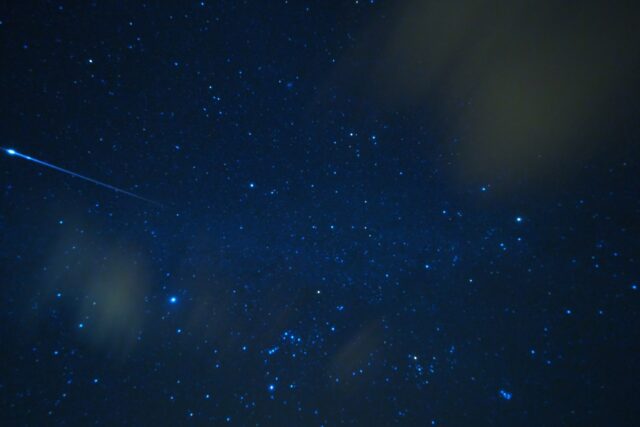
Kumejima's spectacular natural scenery is fantastically colored by the Kumejima fireflies, which can be viewed at locations with clean water bodies.
It is also recommended to join a tour of a facility that offers firefly-viewing nature tours to see the breathtaking scenery in a hole in the ground where there are not many people.
Here are some recommended viewing spots for viewing Kumejima's Kumejima fireflies for your reference.
Kumejima Firefly Museum
Kumejima Firefly Museum is a facility operated by the Kumejima Firefly Association.
The Kumejima Firefly Society is an organization that protects native creatures connected to Kumejima fireflies and fireflies and preserves their healthy ecology through a variety of activities.
This facility is characterized by its hands-on programs, which include Kumejima firefly viewing, mystery night watching, and water and green nature classes, as well as tours that address environmental issues through waterside cleanup activities.
The viewing tours are held around the Kumejima Firefly Museum, where visitors can observe fireflies and other fireflies that live in Okinawa. In early summer, visitors can observe the group flicker of Kumejima fireflies, and in summer and fall, terrestrial fireflies can be observed.
During the daytime, visitors can go sightseeing indoors where they can learn about fireflies in the Firefly Resource Room, which is also a good place to visit on rainy days.
On-site facilities such as a kids' room, shower room, restrooms, pavilion, and wooden path biotope are available for families.
Both adults and children will enjoy this facility where they can learn about the precious Kumejima Fireflies and tackle environmental issues.
Please visit this facility to learn about the mysterious firefly ecology.
Hours of Operation, Access, Admission Fee
Business hours: 9:30-17:00 (closed on Mondays and Tuesdays, closed during summer vacation)
Access: 10 minutes by car from Kumejima Airport, 3 minutes by car from Kaneshiro Port
Admission: Adults 100 yen, children 50 yen
Gouda no Matsu Park
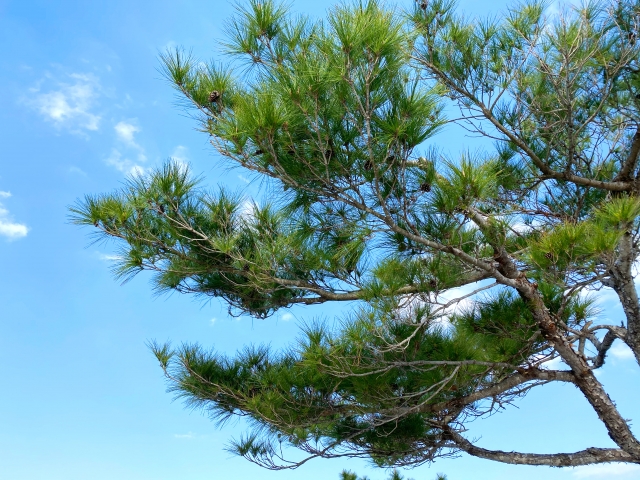
Goe no Matsu Garden is a popular tourist spot on Kume Island where large bonsai-like ryukyu pine trees grow wild.
This location is also famous as a habitat of Kumejima Fireflies, so visitors can appreciate their beautiful group flicker around mid-April, which is early summer.
Firefly viewing tours are frequently held at this spot, and fireflies other than Kumejima fireflies can also be seen here.
There is a beautiful river flowing through the park, which is a habitat for fireflies.
The sight of fireflies dancing wildly on the lawn of the park with a large Ryukyu pine tree in the background will be an unforgettable memory of your visit to Kumejima.
Rules to follow as precautions for firefly viewing are: do not shine flashlights or other lights on fireflies, do not catch fireflies, do not collect plants and trees in the vicinity, do not throw trash away, and do not take flash photographs.
They are delicate creatures that can only live in natural abundance, so do not act in a way that could destroy their ecology.
Hours of operation, access and parking information
Hours of operation: 24 hours
Access: 20 minutes by car from Kumejima Airport, 10 minutes by car from Kaneshiro Port
Parking: Available (toilets and stores are also available)
Not Just Fireflies! Endemic species living on Kume Island
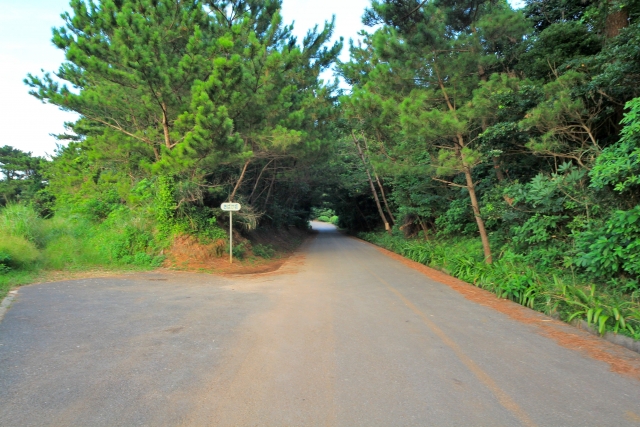
In addition to the Kumejima fireflies, there are other species endemic to Kumejima.
Kume Island is full of untouched and beautiful nature, and you may encounter precious creatures.
Participation in nature tours and other activities will give you the experience of observing a wide variety of living creatures.
Here are a few of the creatures that are endemic to Kume Island, so if you are interested, join a nature tour or night tour.
Ryukyu python (Python kizatosoensis, species of Japanese python)
The Kikuzatosawa snake is a freshwater (underwater-living) snake found only on Kume Island, Okinawa.
The probability of encountering this rare snake during your trip is very low, as it is only found in a few mountain streams on Kume Island.
It is the only sawsnake that lives in Japan, and its appearance is characterized by small orange and yellow spots on its blackish-brown body.
The Kikuzatosawa snake's favorite foods are said to be king crabs, small crustaceans, and tadpoles, making it a non-poisonous snake.
It is a natural treasure of Okinawa Prefecture, registered on the Red List of the Ministry of the Environment because it is an endangered species due to the destruction of clean mountain streams.
The relationship between the habitat of the kumejimabotaru and the location where the kikuzaatosawa snake was found has been presented at academic conferences, but because the population is small and lives in the water, research has not been conducted.
Rhizopus (saprobic fungus beetle)
A subspecies of the Yamato beetle that lives in mainland Japan is the Kumejima beetle.
The physical characteristics of this beetle are its short antlers and overall small size.
As a creature that survived on Kume Island after being left behind when Japan was connected to the continent by land during the Ice Age, this beetle is very valuable from a scientific point of view.
Although not listed as an endangered species, the high prices paid at auctions in recent years have raised concerns about the decline in the population due to overhunting.
There have been many cases of genetic changes due to crossbreeding with other species as pets, and collection should be done carefully to prevent genetic contamination that has continued since the Ice Age.
Please do not take them back outside of Kume Island just because they fetch a high price at auction, but release them locally after you catch them and observe them.
Ryukyu eyelid gecko
Kume-jima's endemic Kume-idol is a subspecies of Kuroiwa-idol, the black-tailed lizard.
This creature is characterized by its nocturnal nature and has a thick, large tail that stores fat in the tail for when food is scarce.
Like ordinary lizards, when they sense an enemy, they raise their tails to threaten, and when they sense danger, they detach their tails to protect themselves.
The Kume Lizard Monster is a protected species designated by Okinawa Prefecture, and therefore cannot be captured or kept in captivity.
In appearance, they have yellow or white horizontal lines on their backs and a pretty face with dark eyes.
They prefer humid places and may be found in forests and caves.
A rental car is recommended for sightseeing in the islands!
Book your rental car on Kumejima Island early!

A rental car is recommended for getting around on Kume Island!
It is recommended because we can move around during the trip and also at our own timing, such as early morning (sunrise), sunset, or a short trip outside to see the stars!
▼Learn more about car rentals ▼
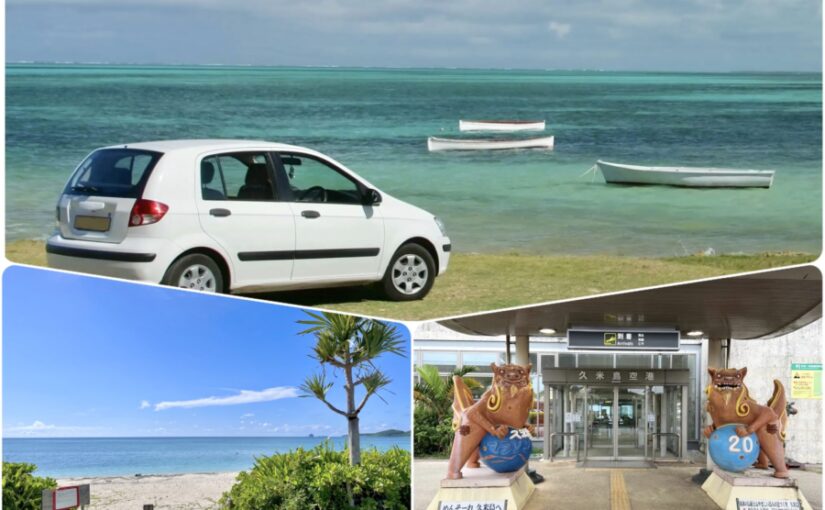 Kumejima Island/Car Rental】☆Early reservation recommended☆Compact class car rental plan for up to 5 persons ★Includes airport pickup & exemption compensation ★Cancellation free until 3 days before (No.r-1)開始時間8:00-19:00所要時間Negotiable4,950 yen
Kumejima Island/Car Rental】☆Early reservation recommended☆Compact class car rental plan for up to 5 persons ★Includes airport pickup & exemption compensation ★Cancellation free until 3 days before (No.r-1)開始時間8:00-19:00所要時間Negotiable4,950 yen
summary
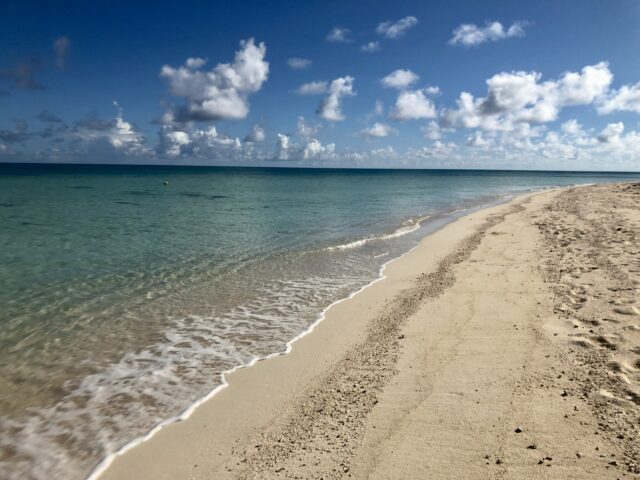
In this issue, we have introduced various information about fireflies on Kumejima!
Most visitors to Kumejima are there for sightseeing, where they can enjoy the beautiful ocean.
However, there are also opportunities to encounter precious creatures in scenic areas with abundant nature.
If you would like to observe Kumejima fireflies flickering en masse, please visit in late April or early May.
The special experience will be a good memory of your trip.
Watch fireflies dance wildly on beautiful Kume Island and create unforgettable memories.
Thank you for taking the time to read this to the end.
 Kumejima】Hate-no-hama Beach Landing Tour (with free snorkel set rental) (No.801)開始時間Summer season from May to October
Kumejima】Hate-no-hama Beach Landing Tour (with free snorkel set rental) (No.801)開始時間Summer season from May to October9:00-12:00 / 14:00-17:00
Winter season: November to April
9:00-11:00 / 14:00-16:00所要時間Summer season from May to October
Approx. 3 hours
Winter season: November to April
Approx. 2 hours4,500 yen
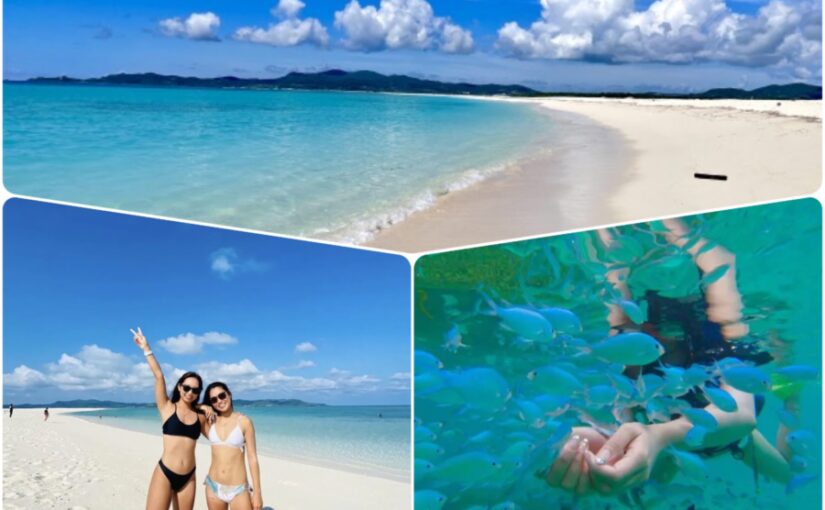 Kumejima】Hate-no-hama beach landing & tropical snorkeling tour with pick-up service (No.802)開始時間Summer season from May to October
Kumejima】Hate-no-hama beach landing & tropical snorkeling tour with pick-up service (No.802)開始時間Summer season from May to October9:00-12:00 / 14:00-17:00
Winter season: November to April
9:00-11:00 / 14:00-16:00所要時間Summer season from May to October
Approx. 3 hours
Winter season: November to April
Approx. 2 hours7,000 yen

